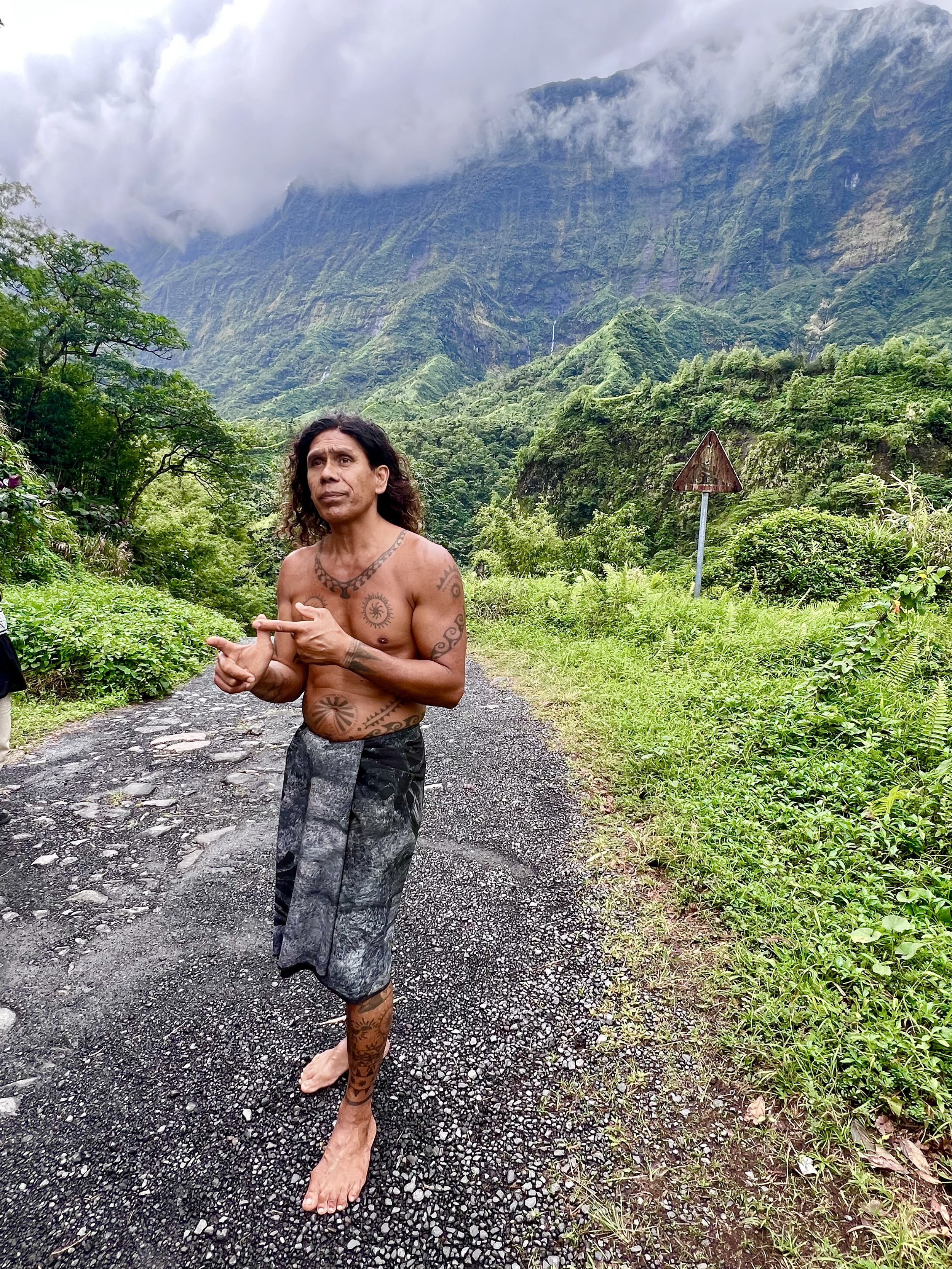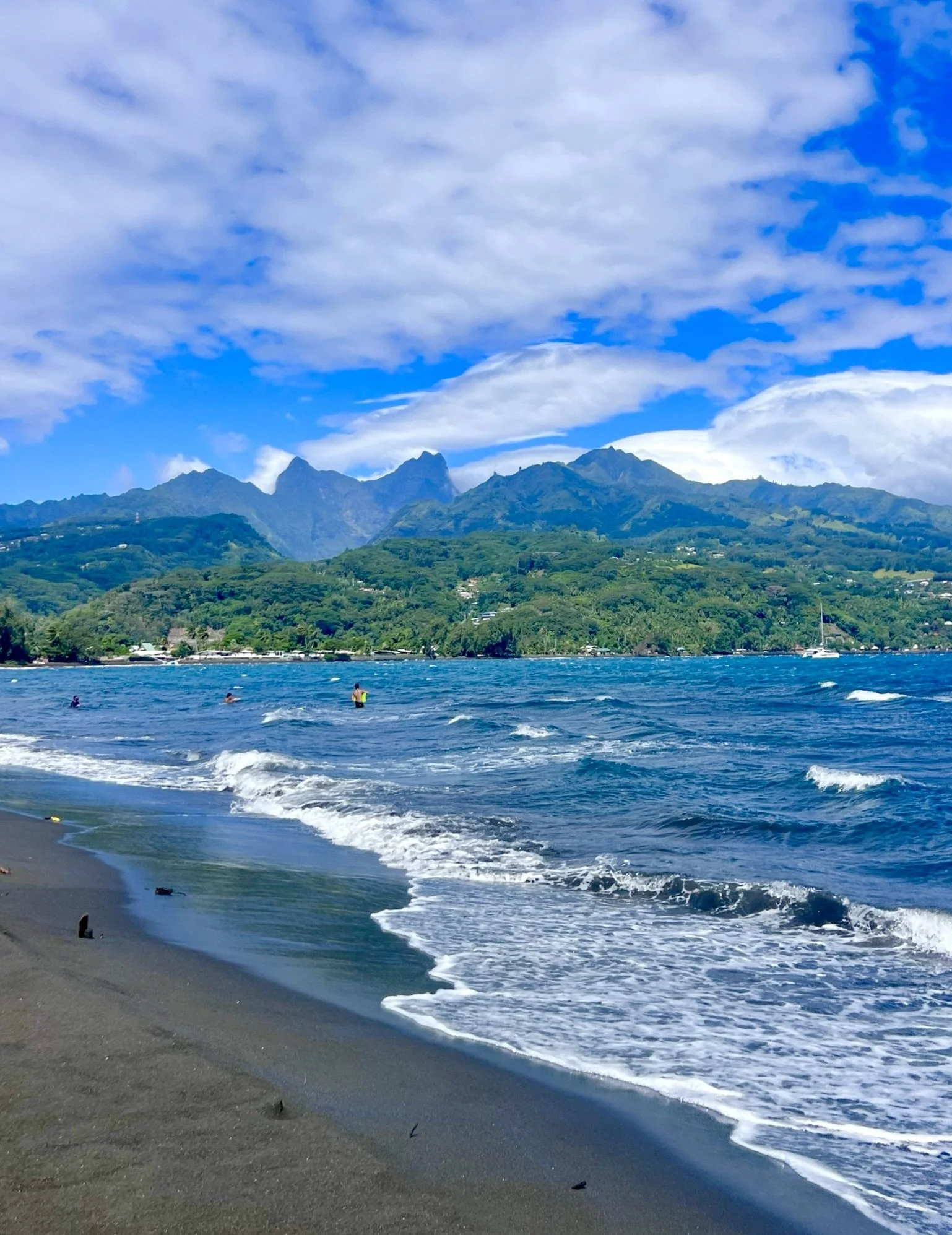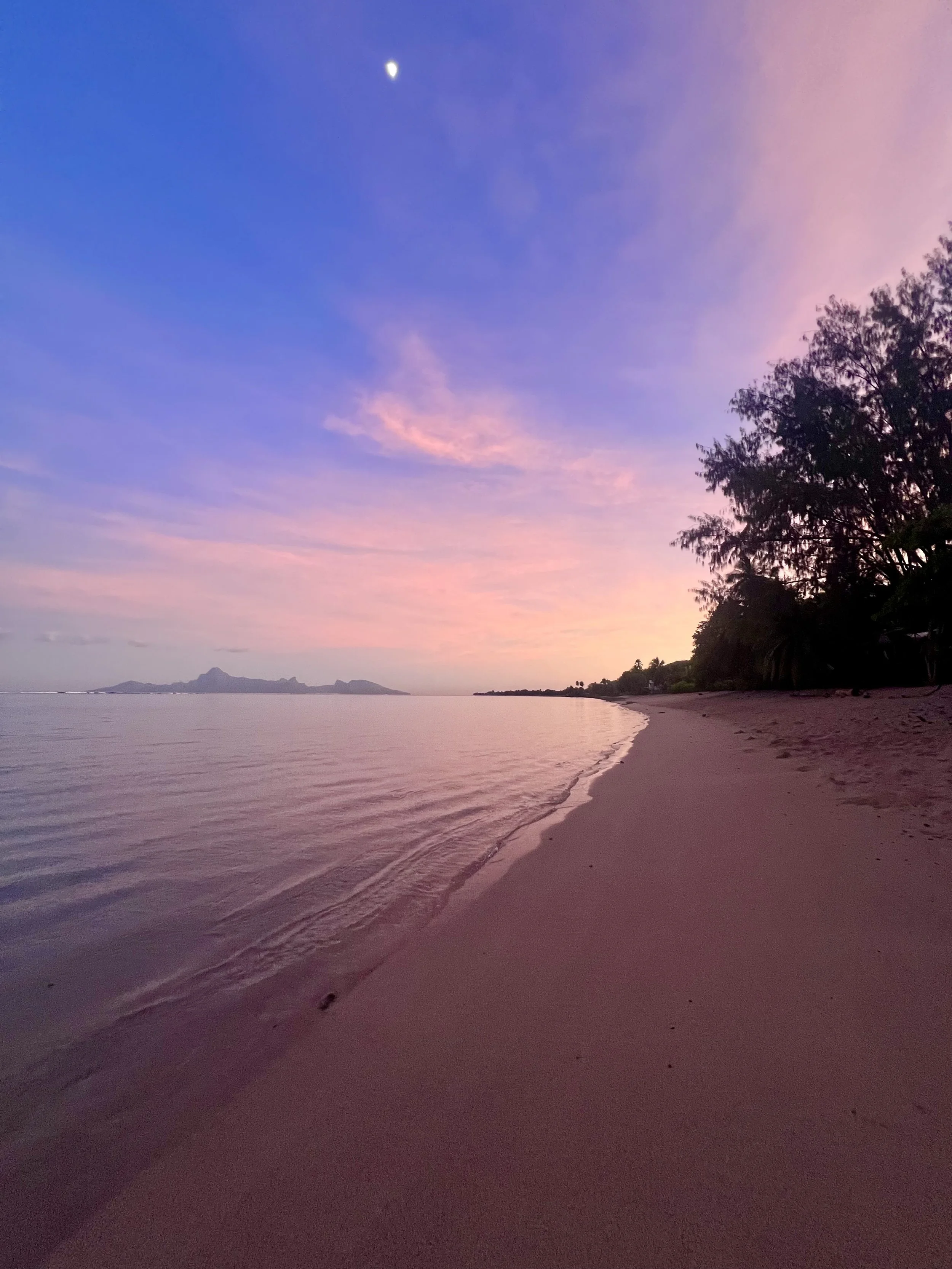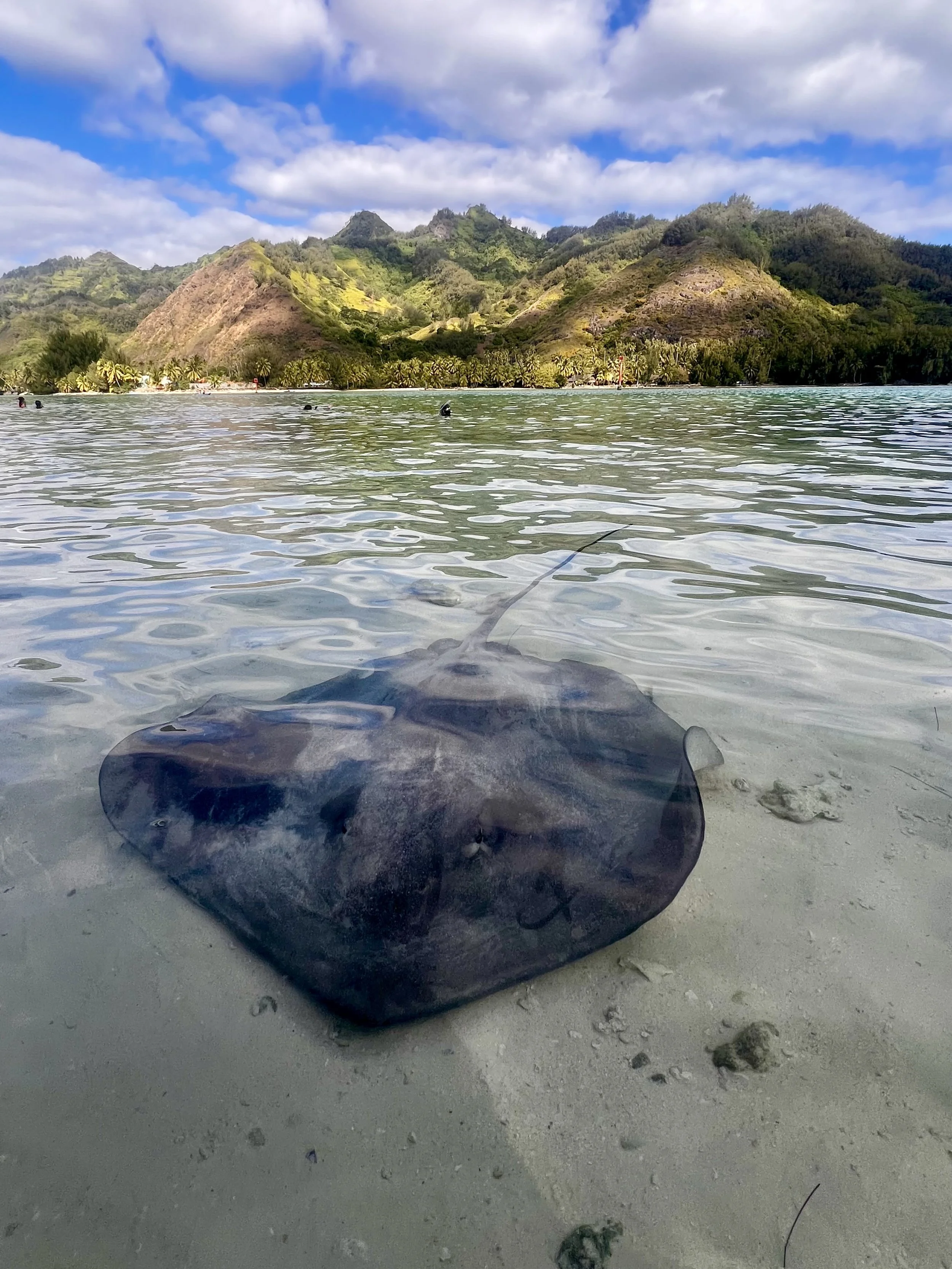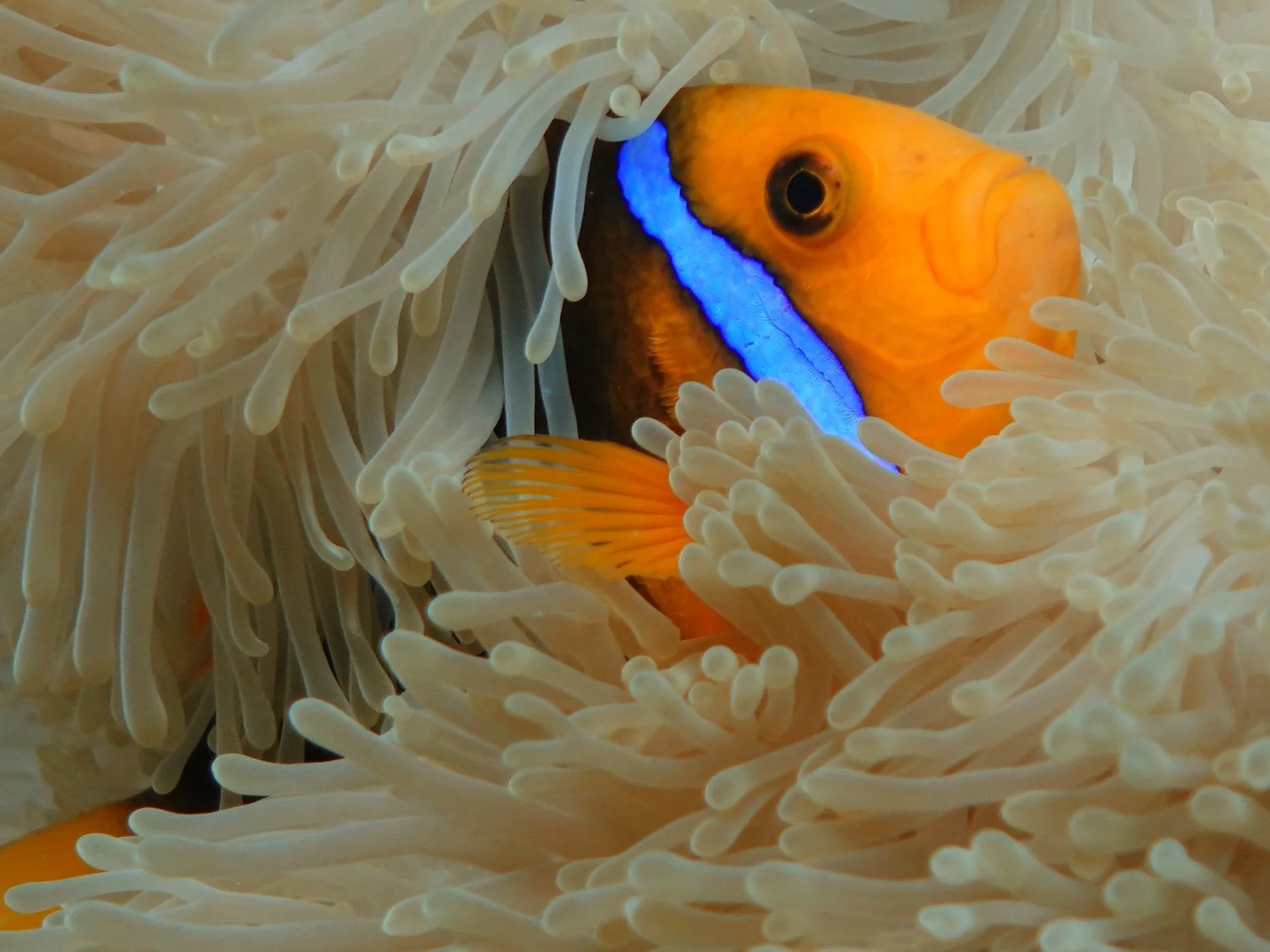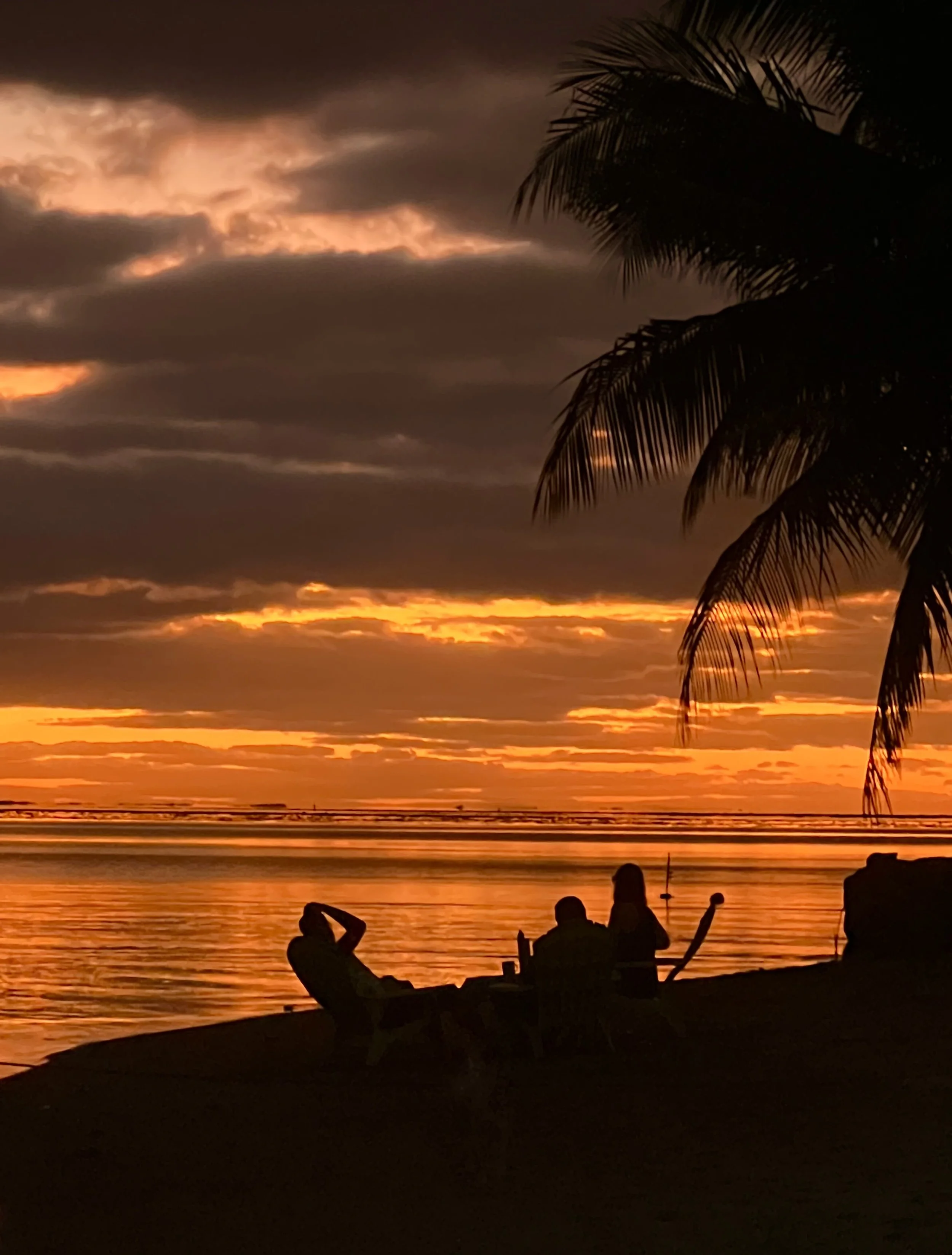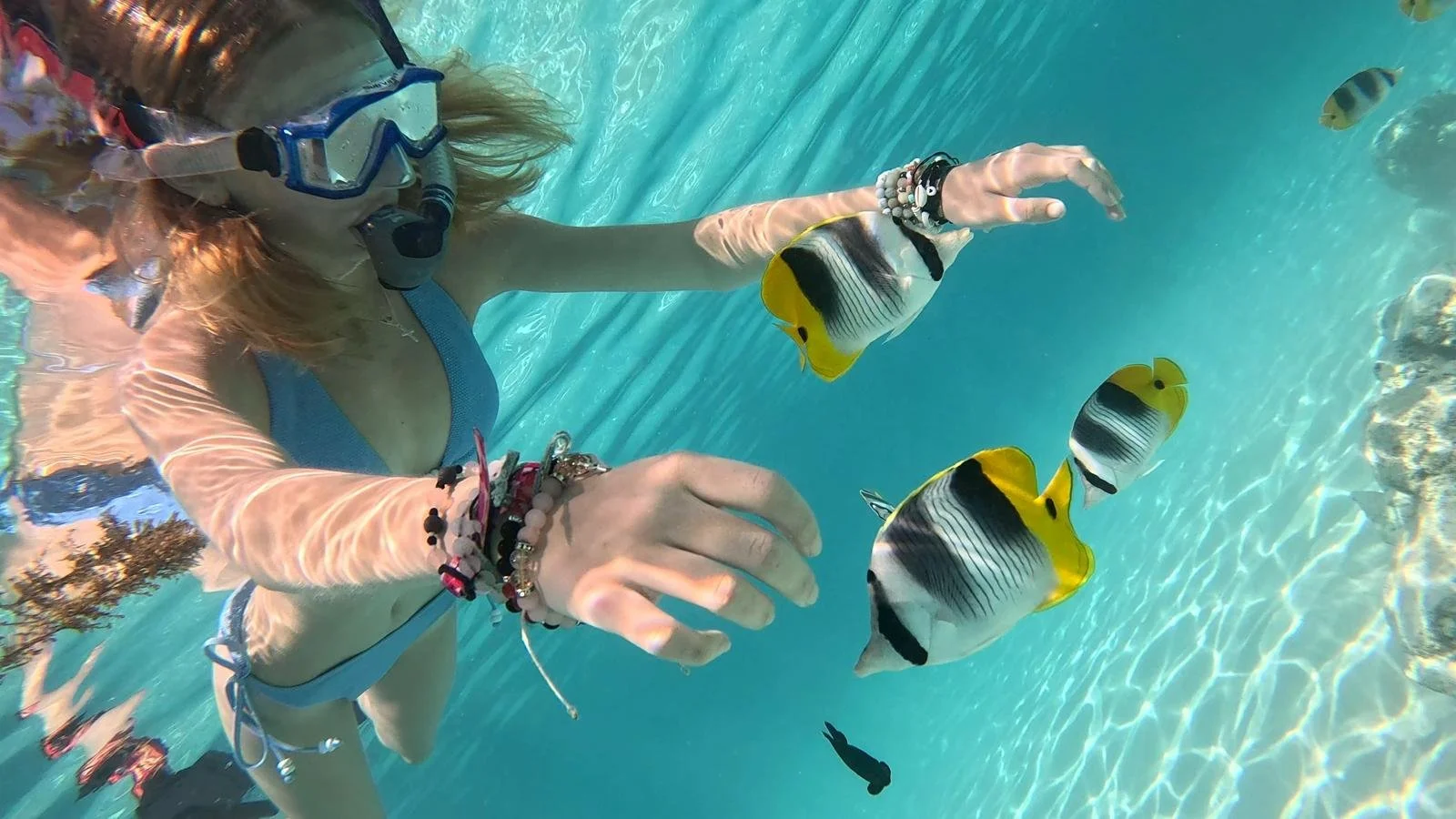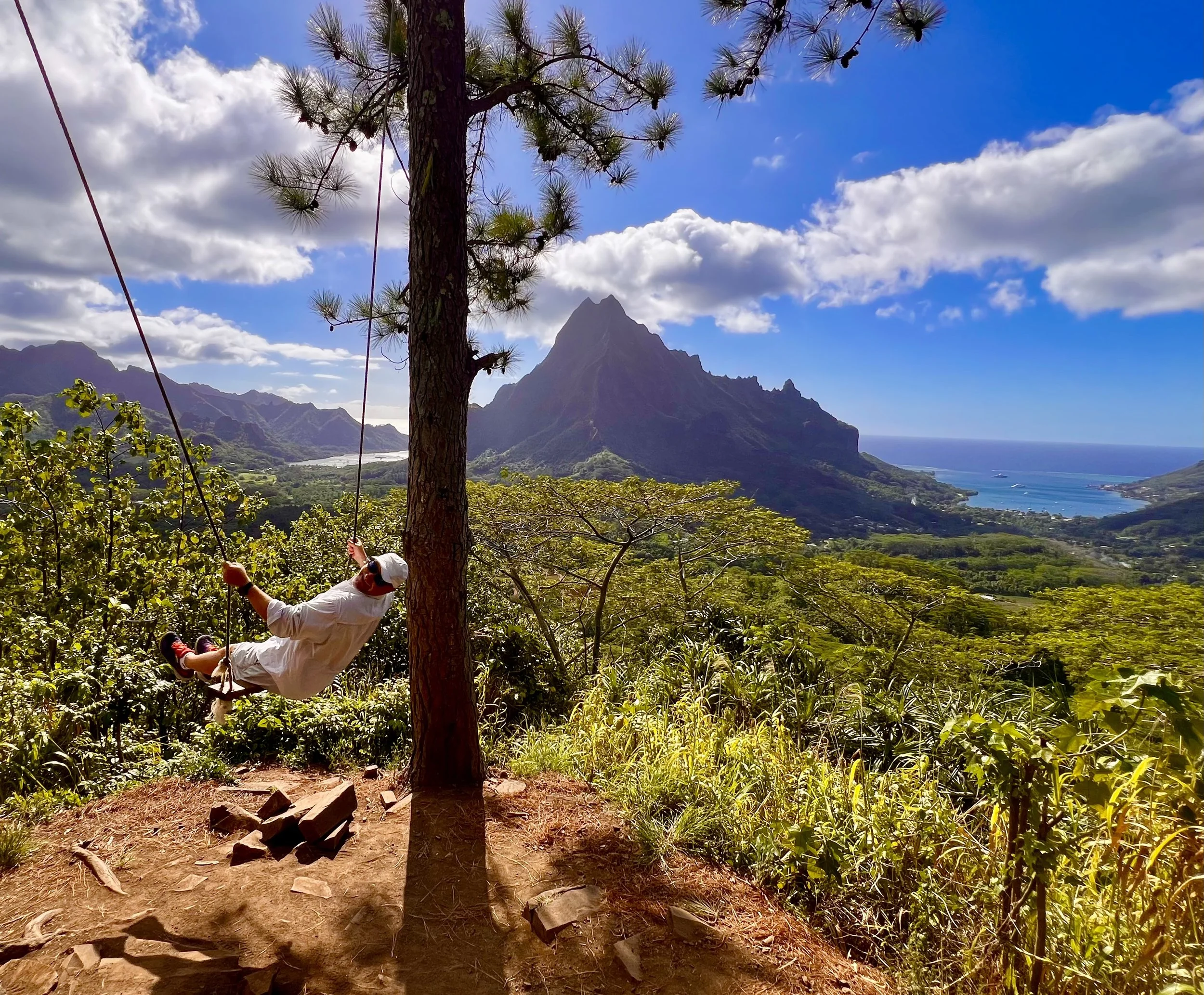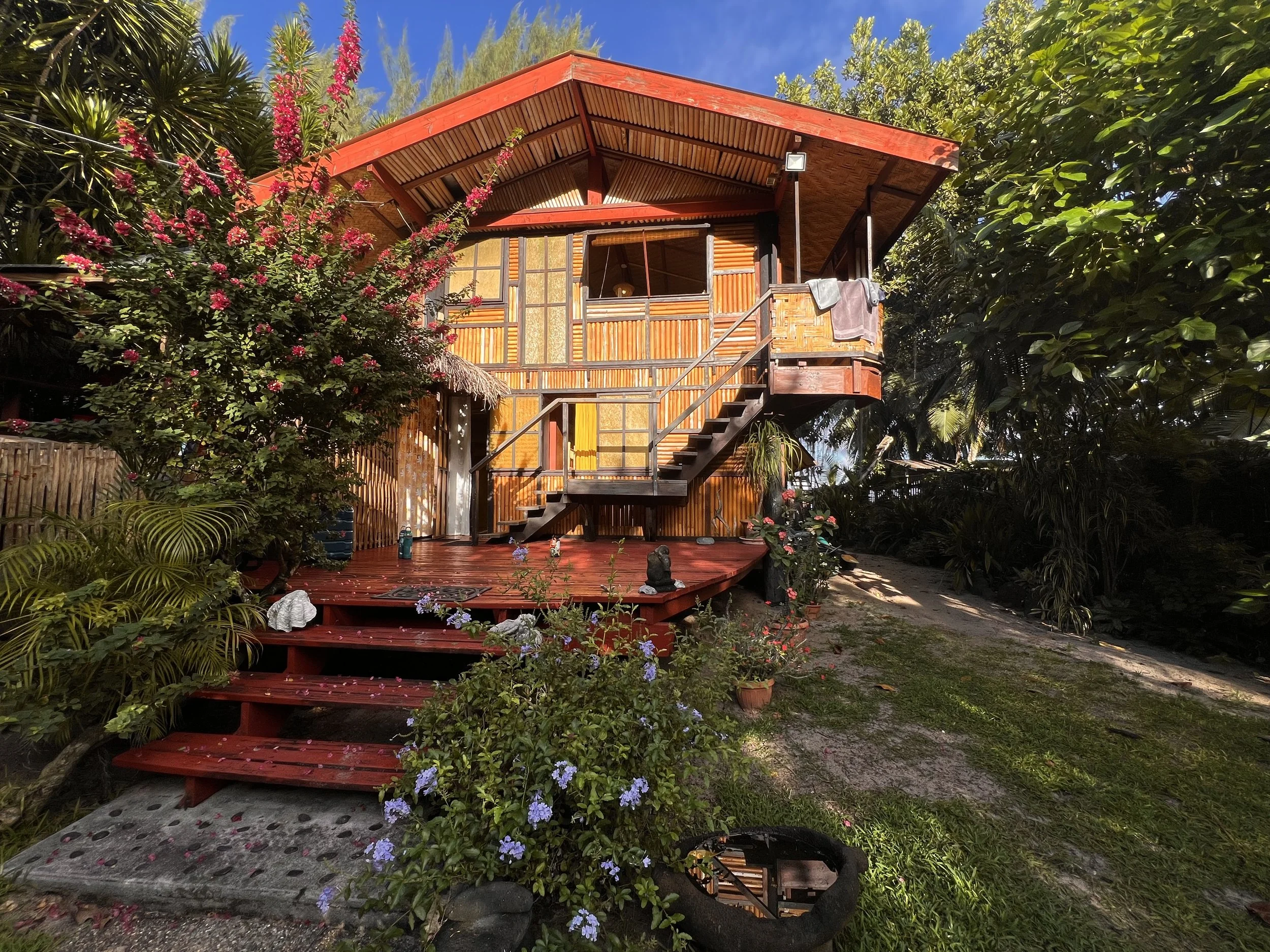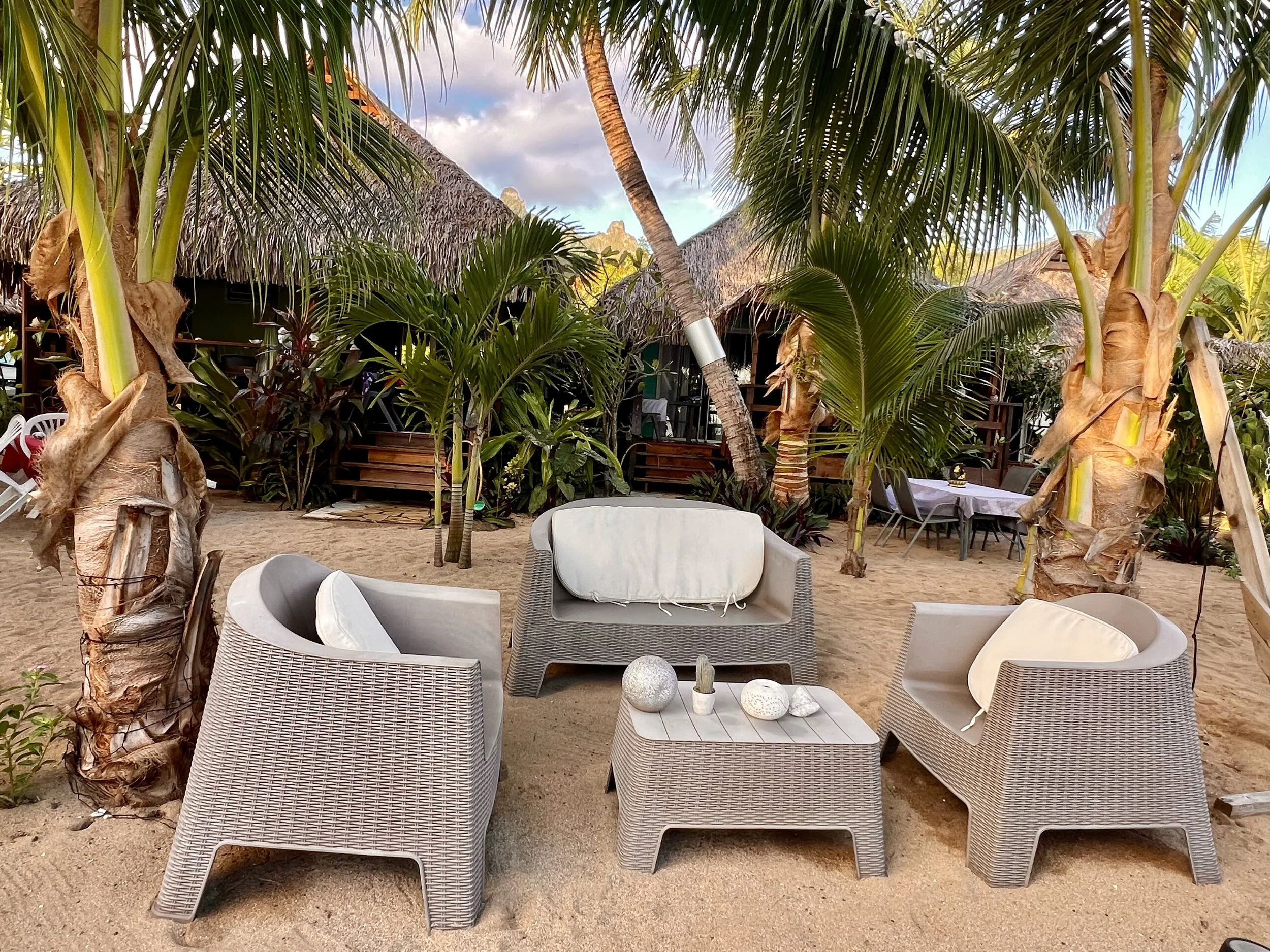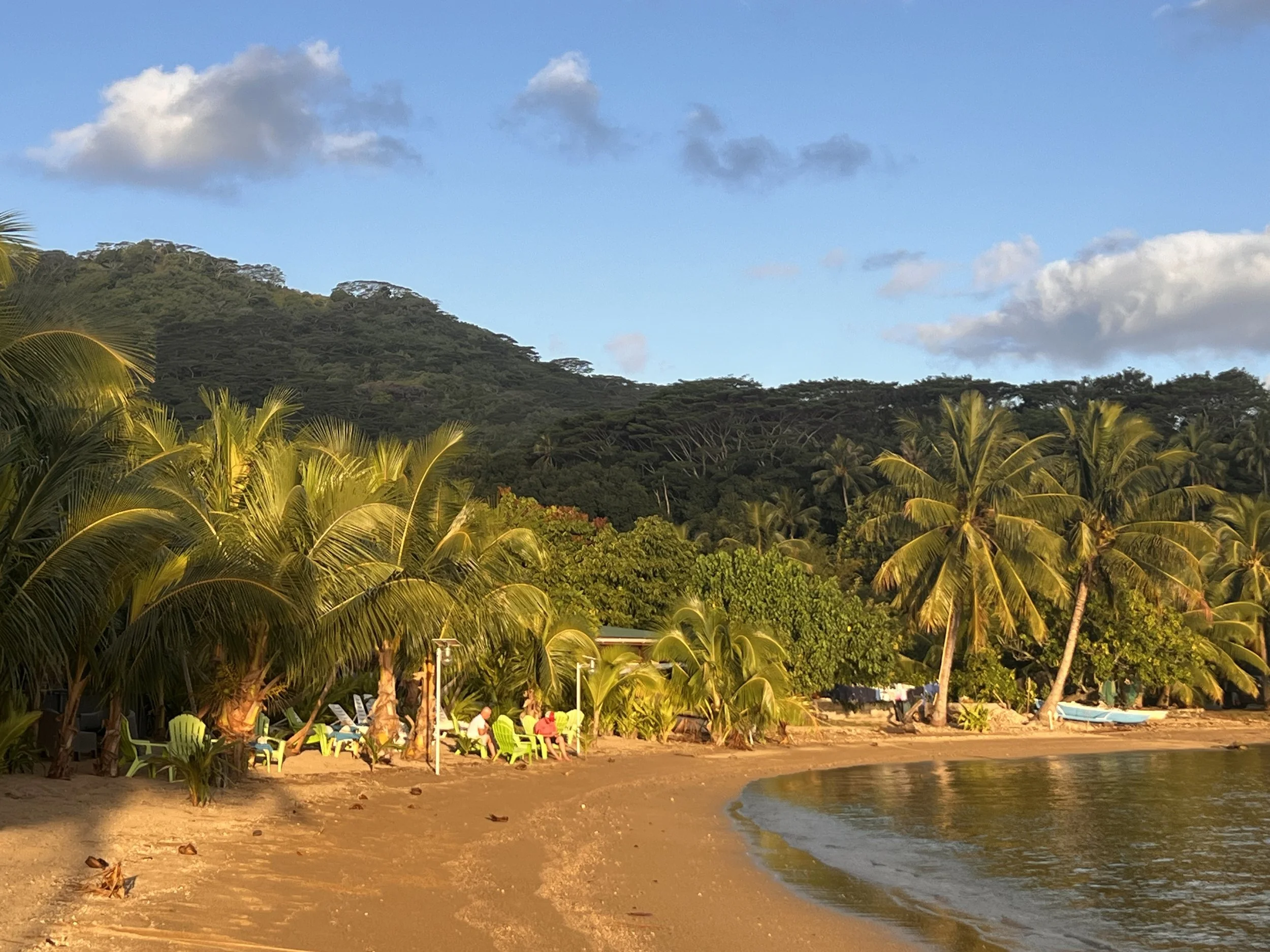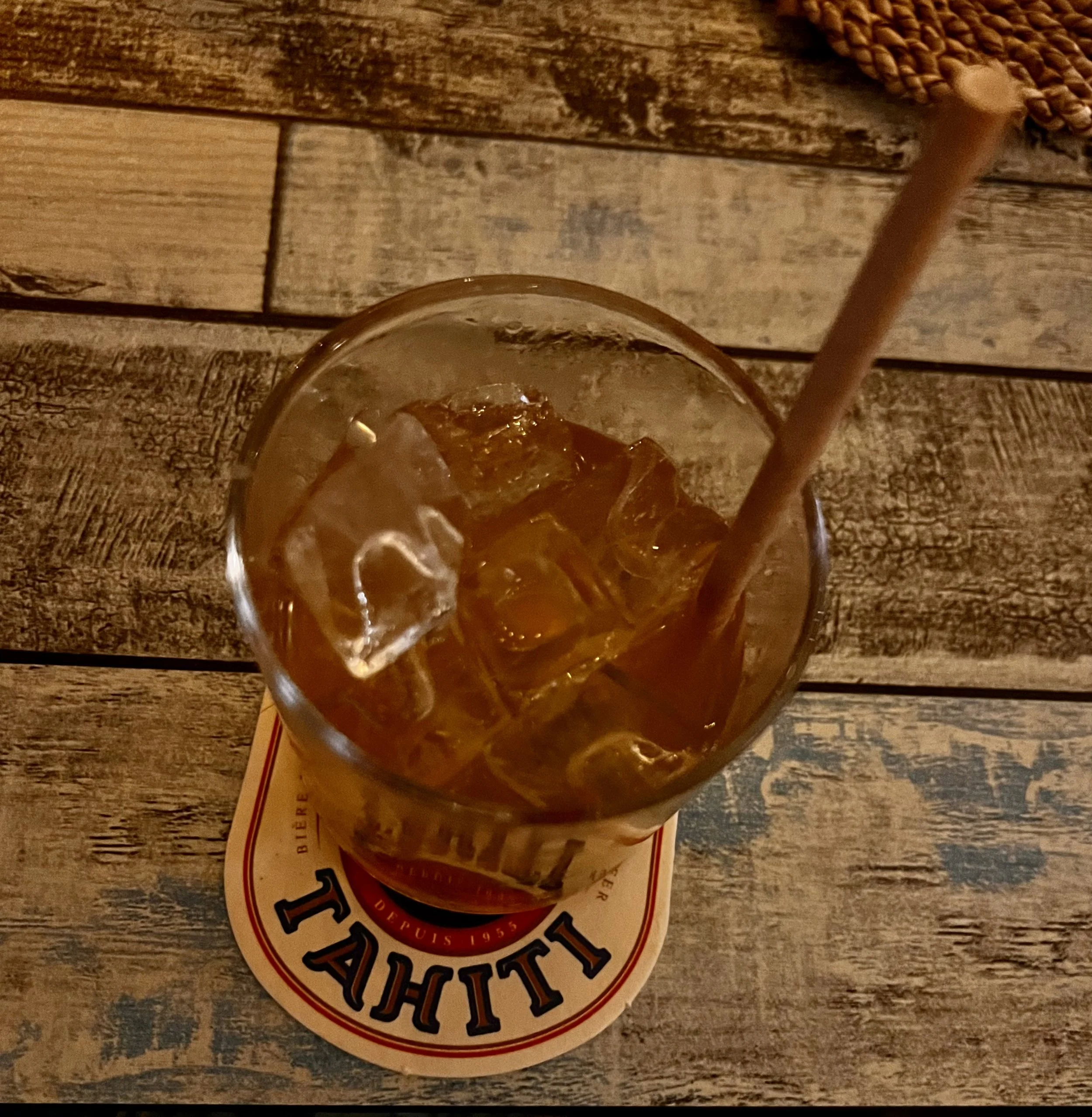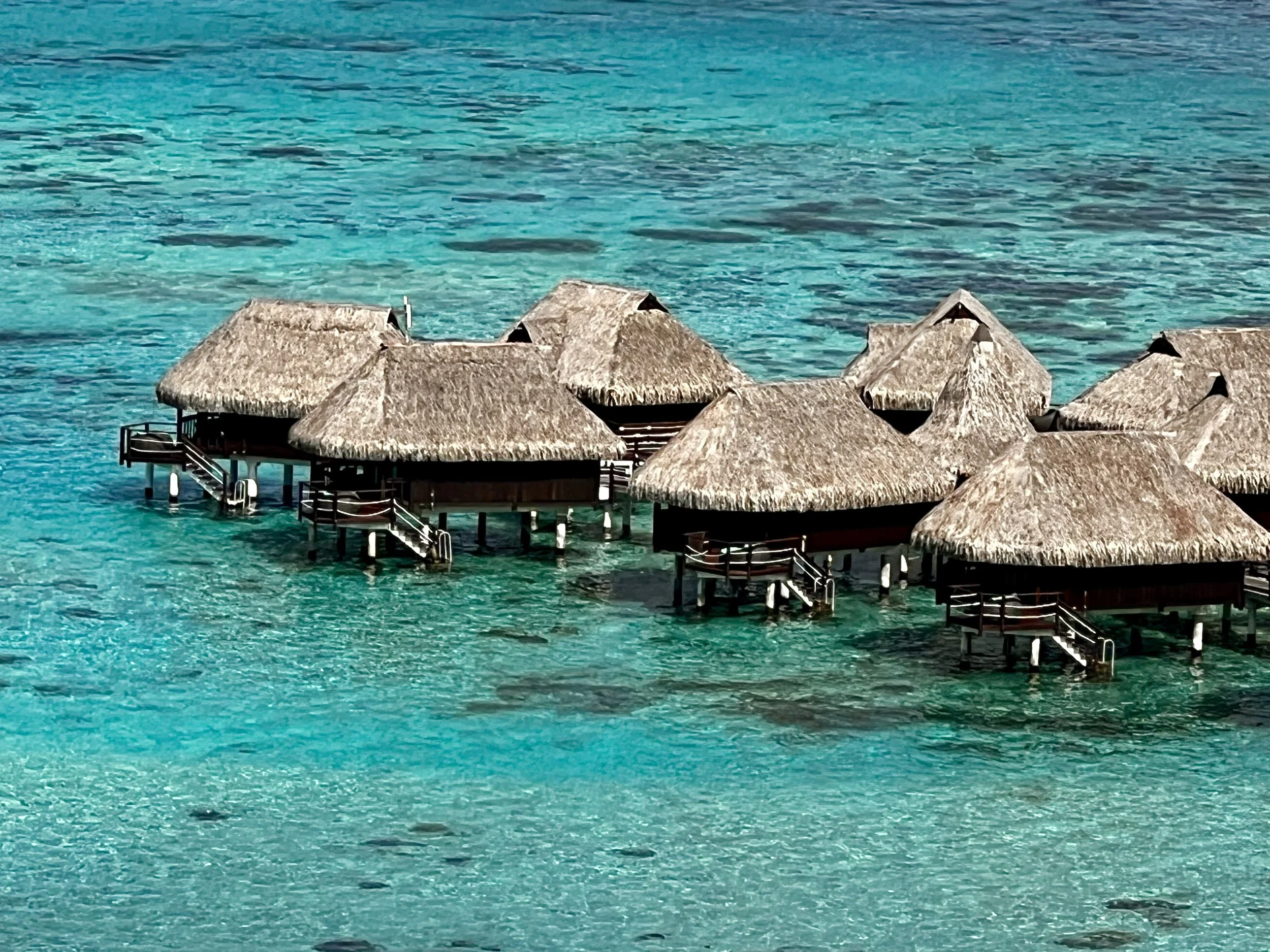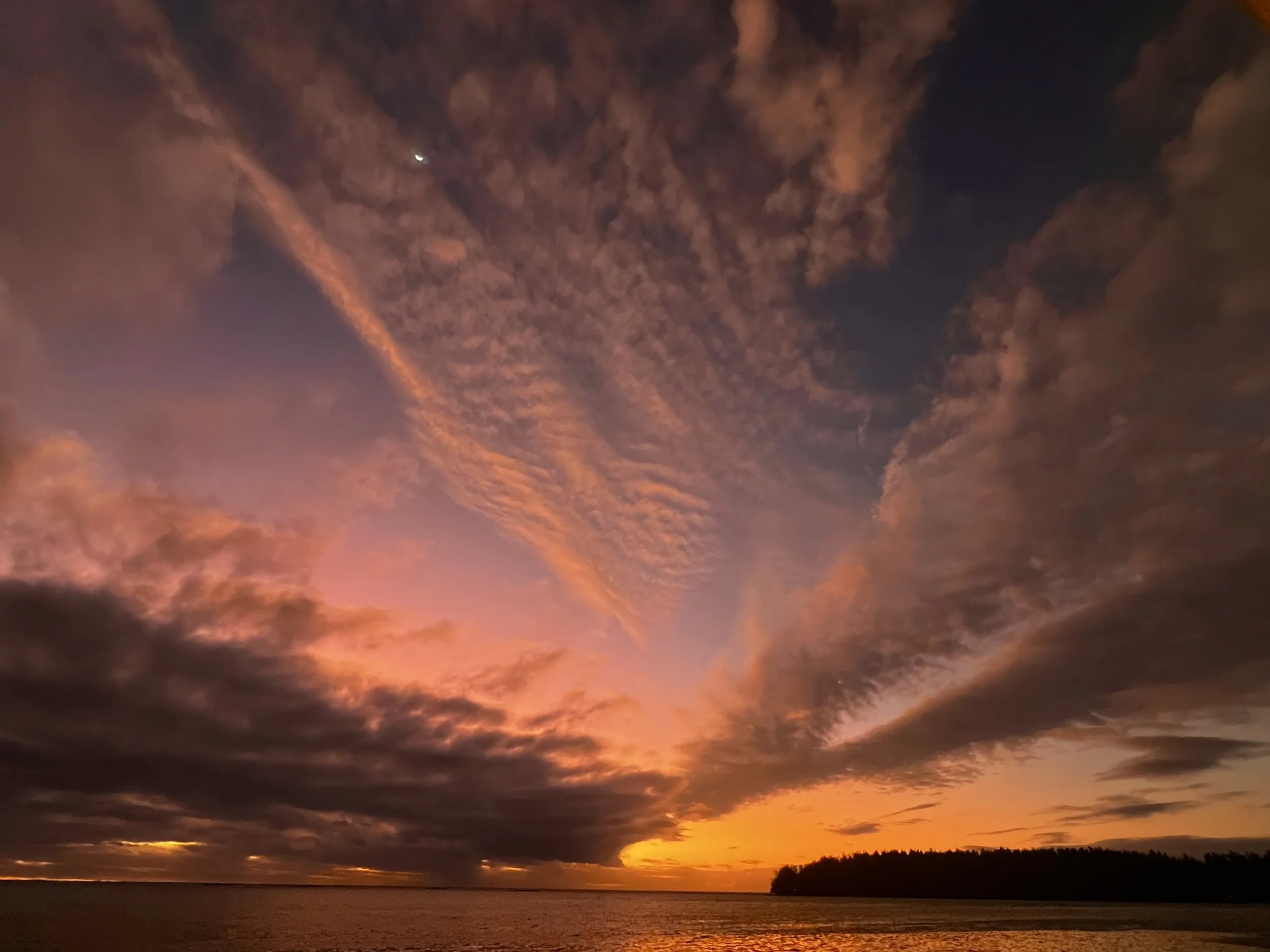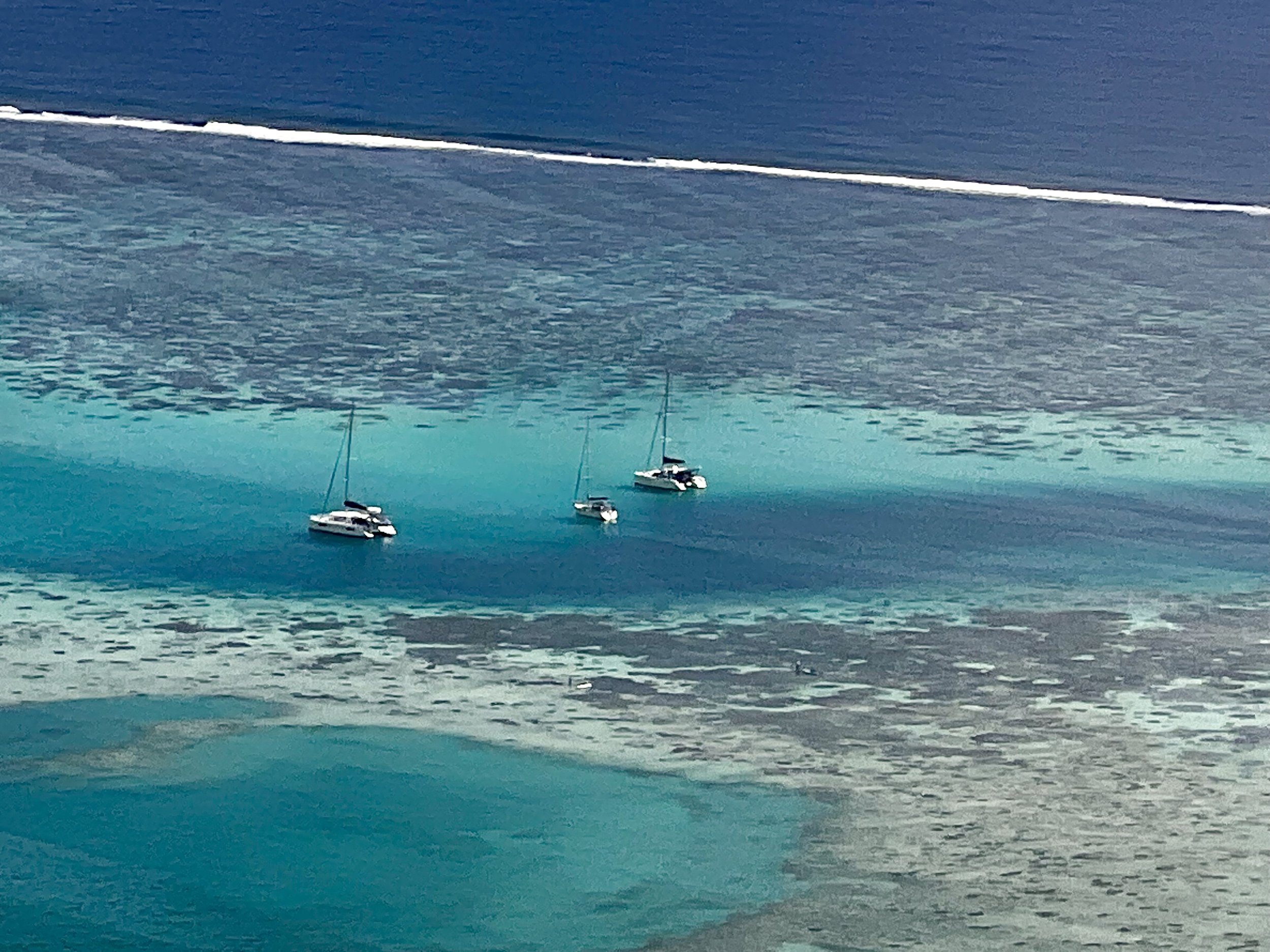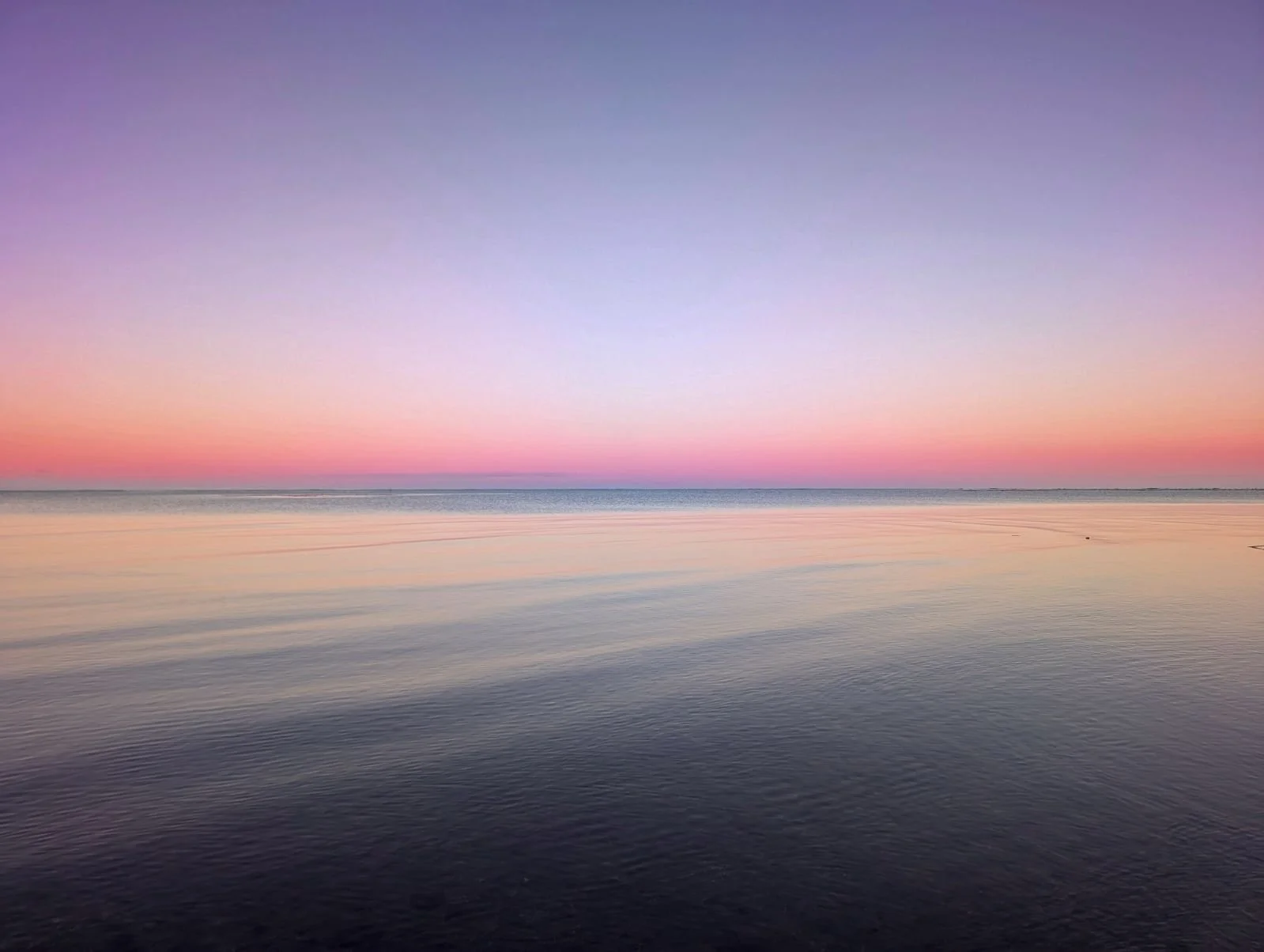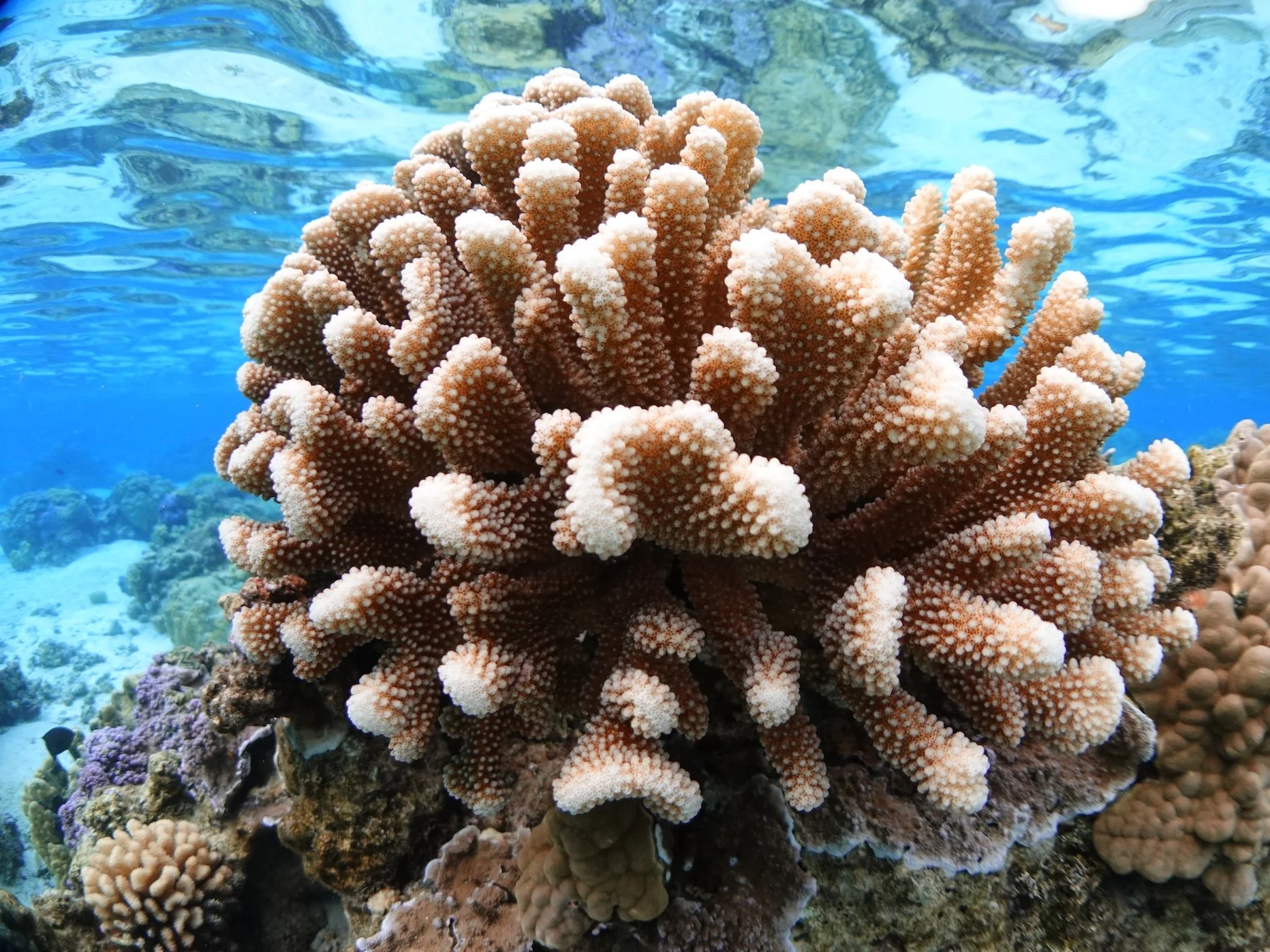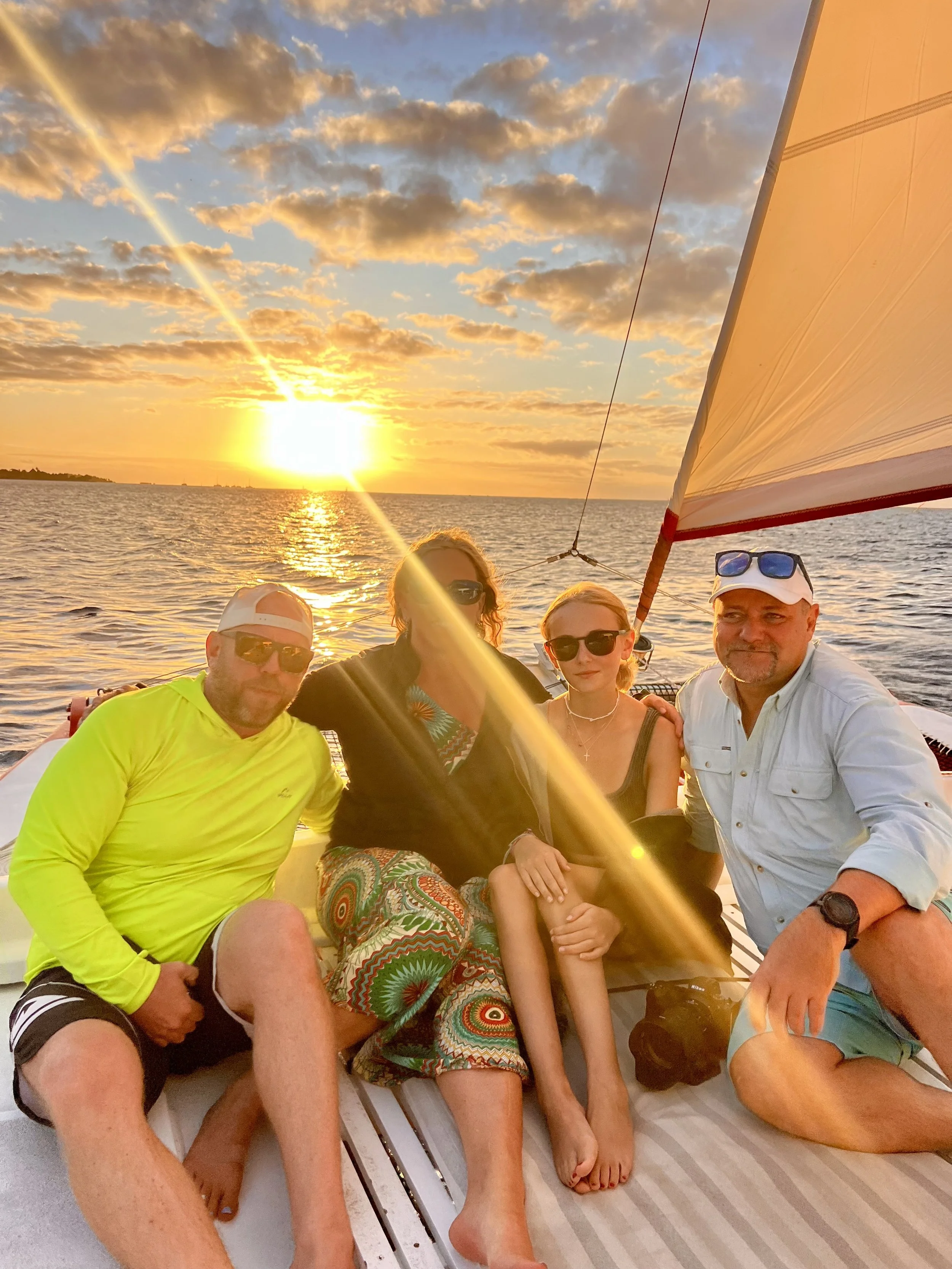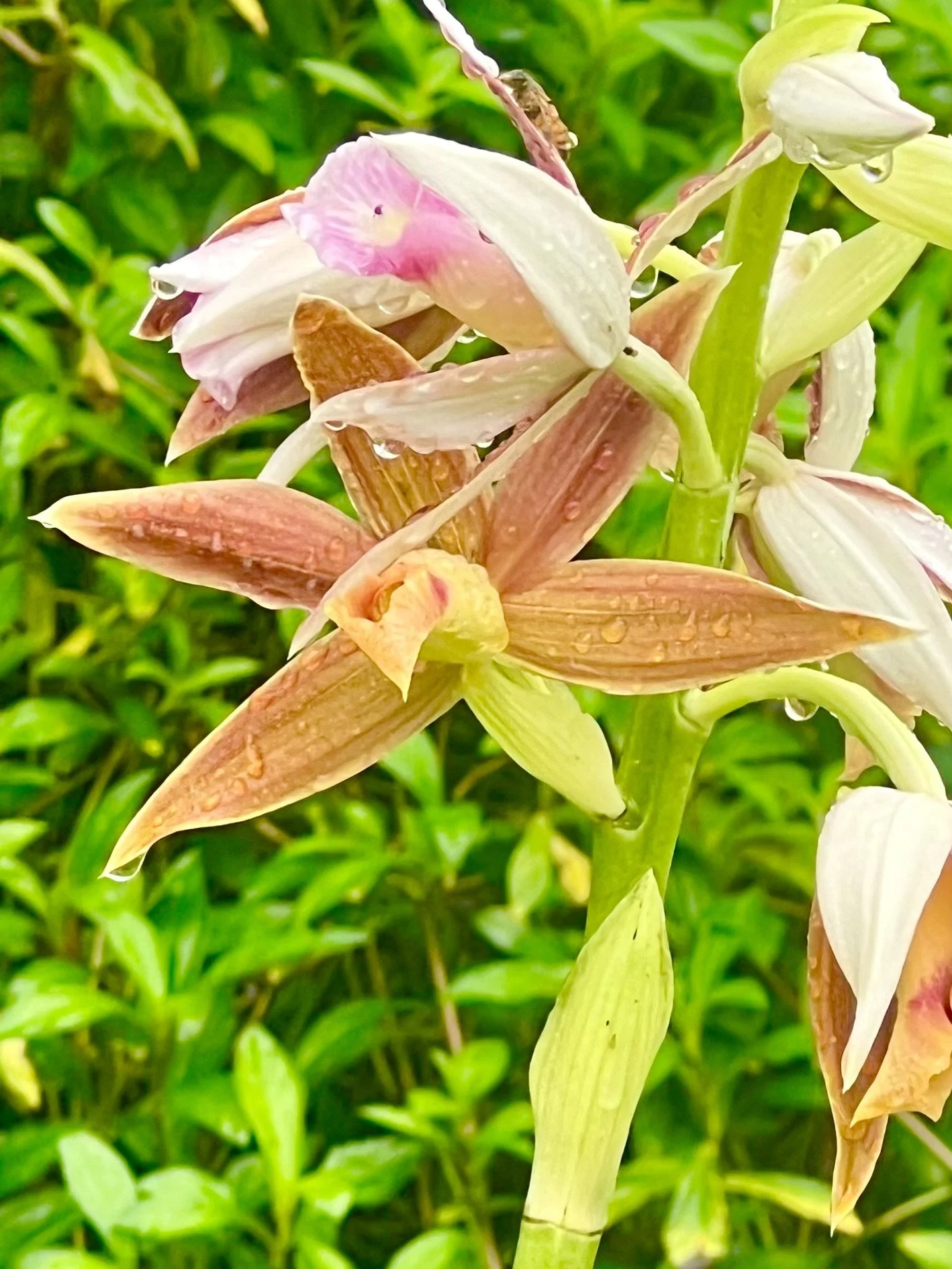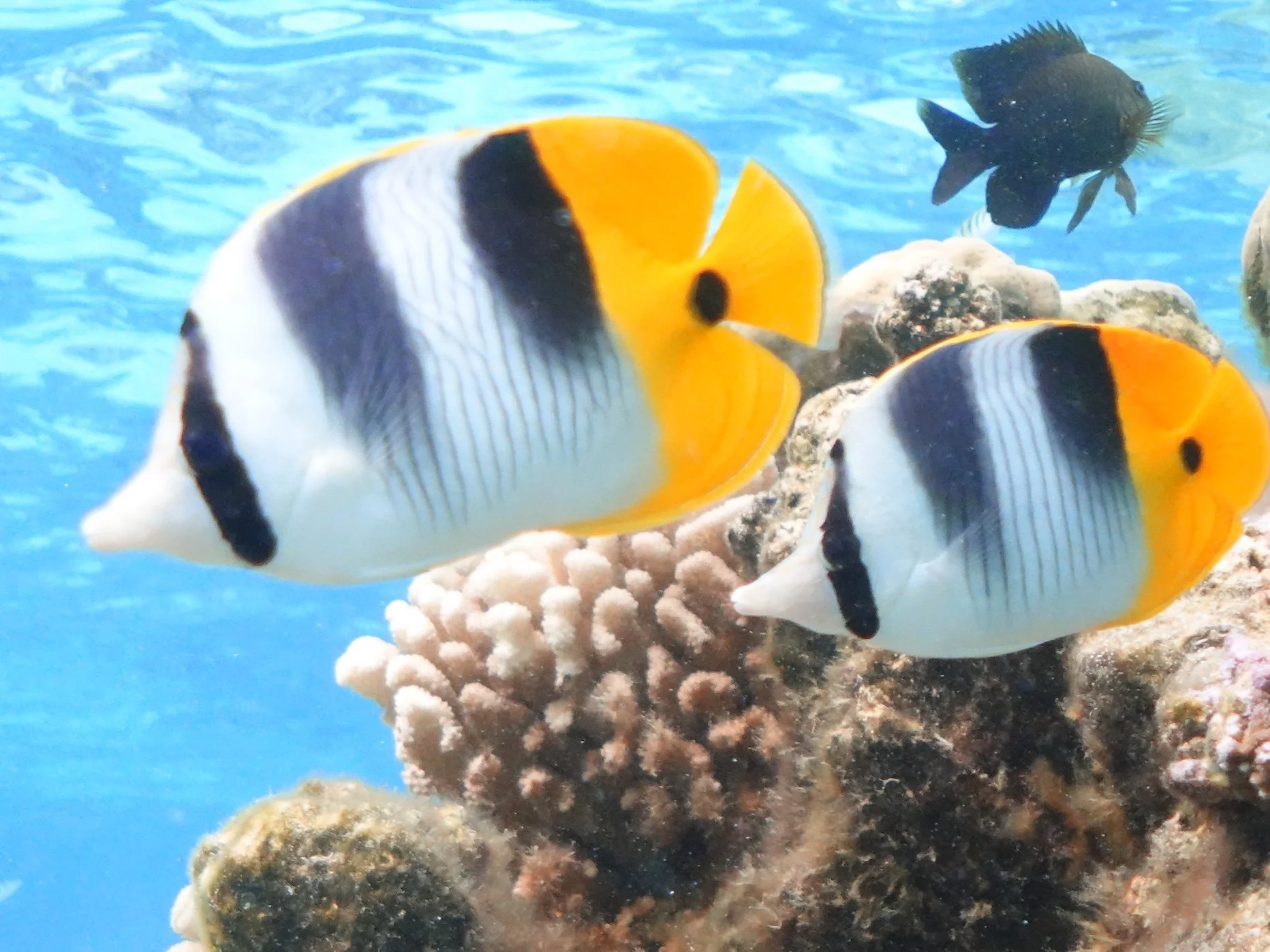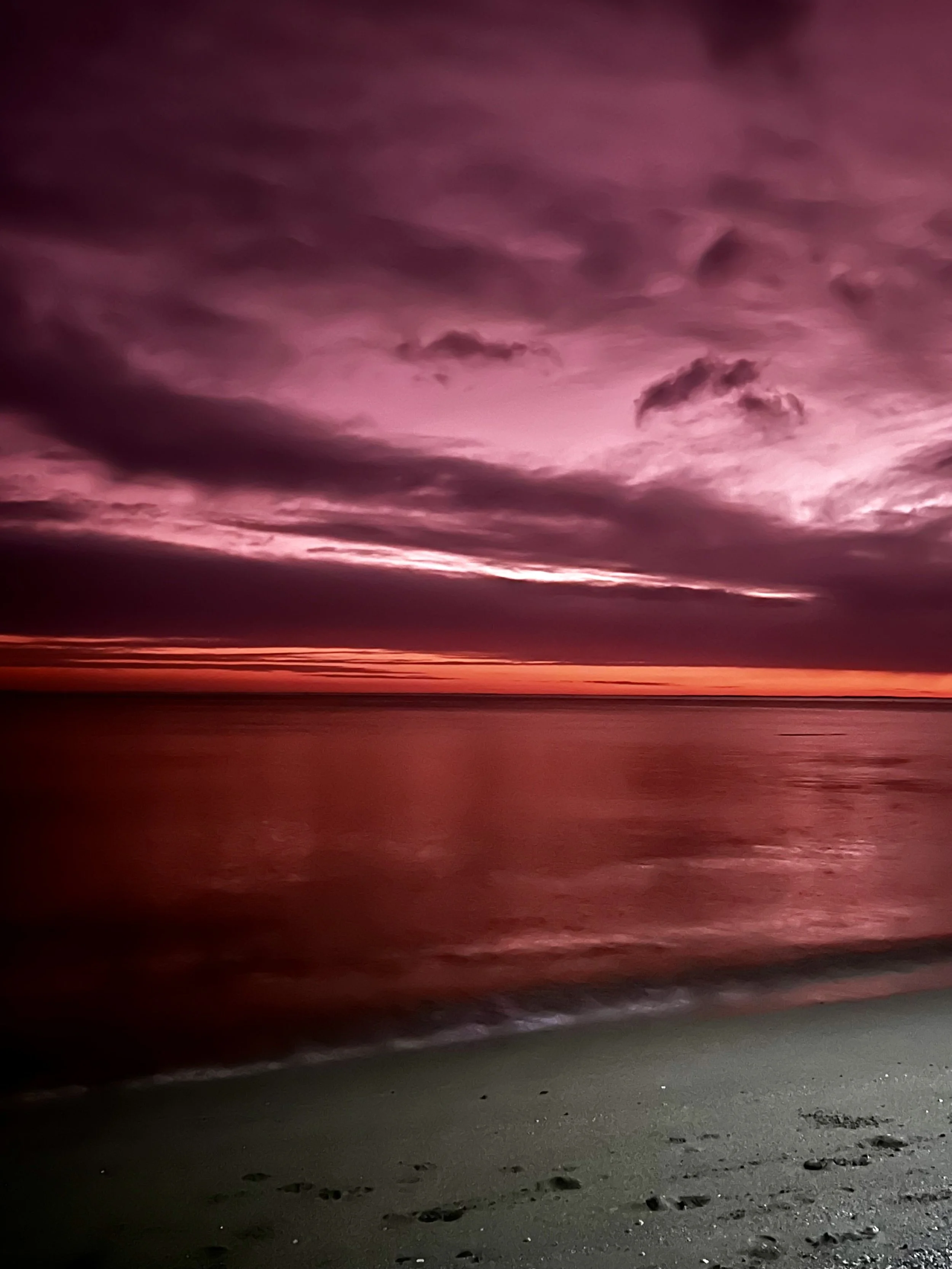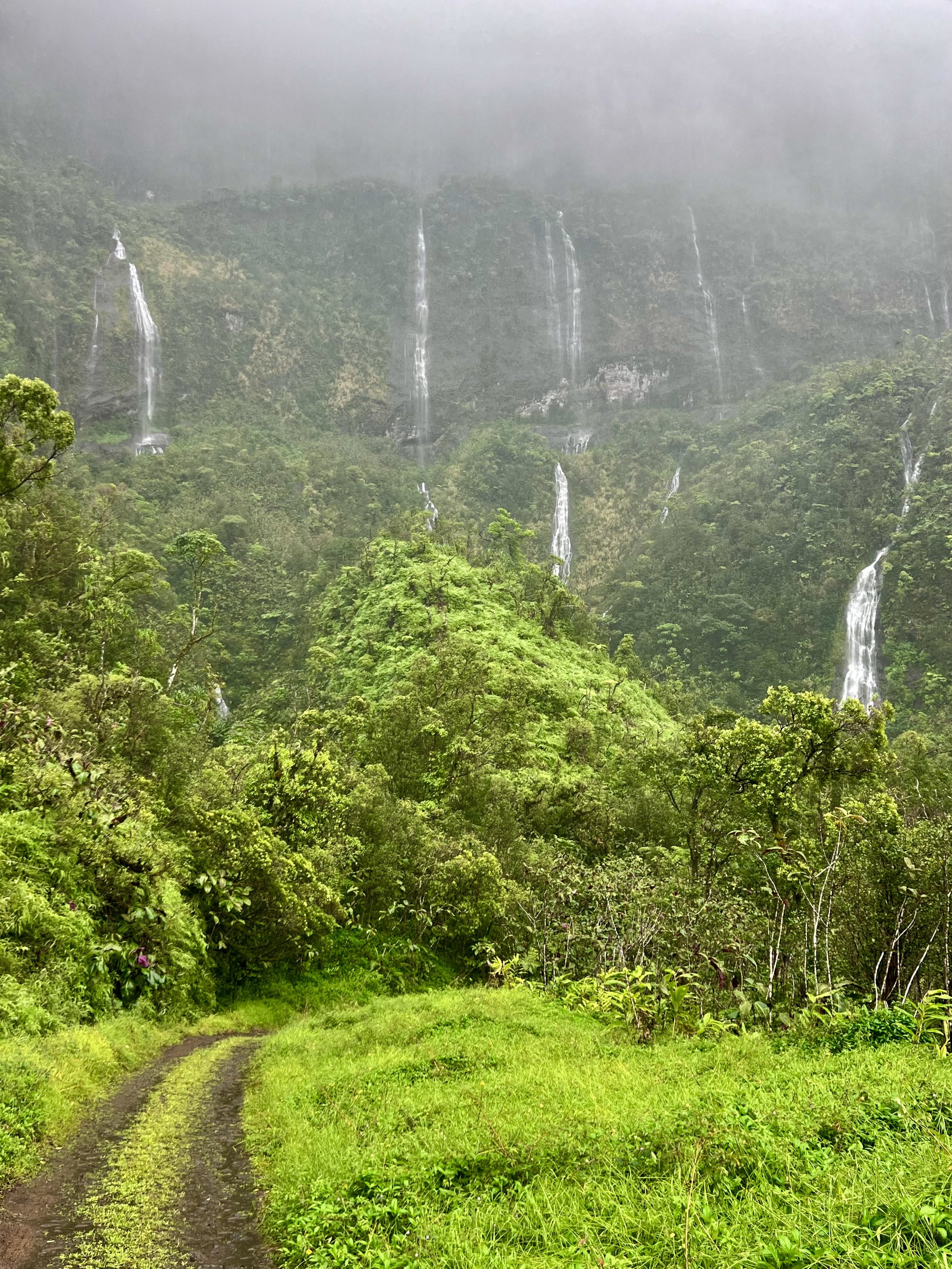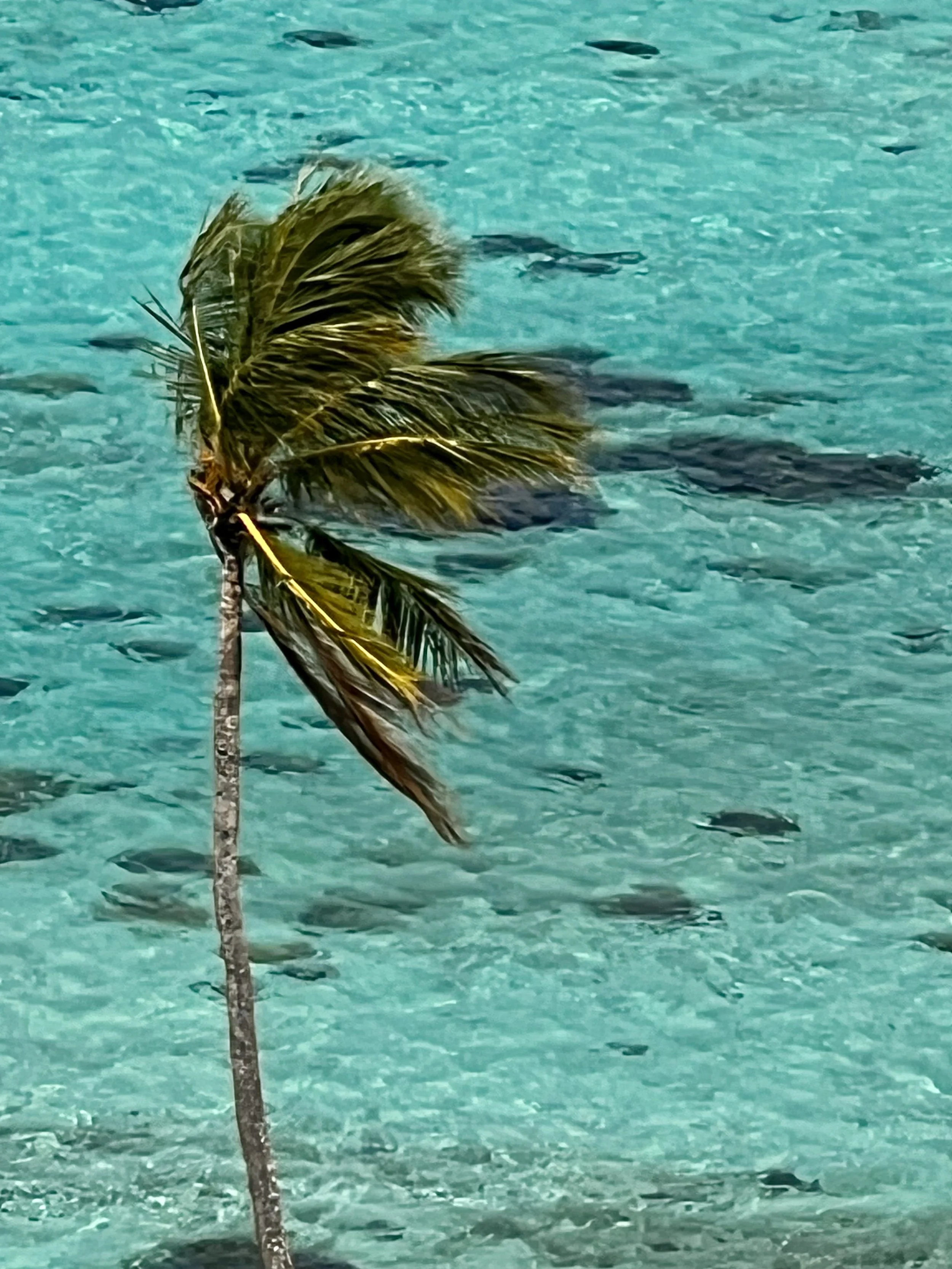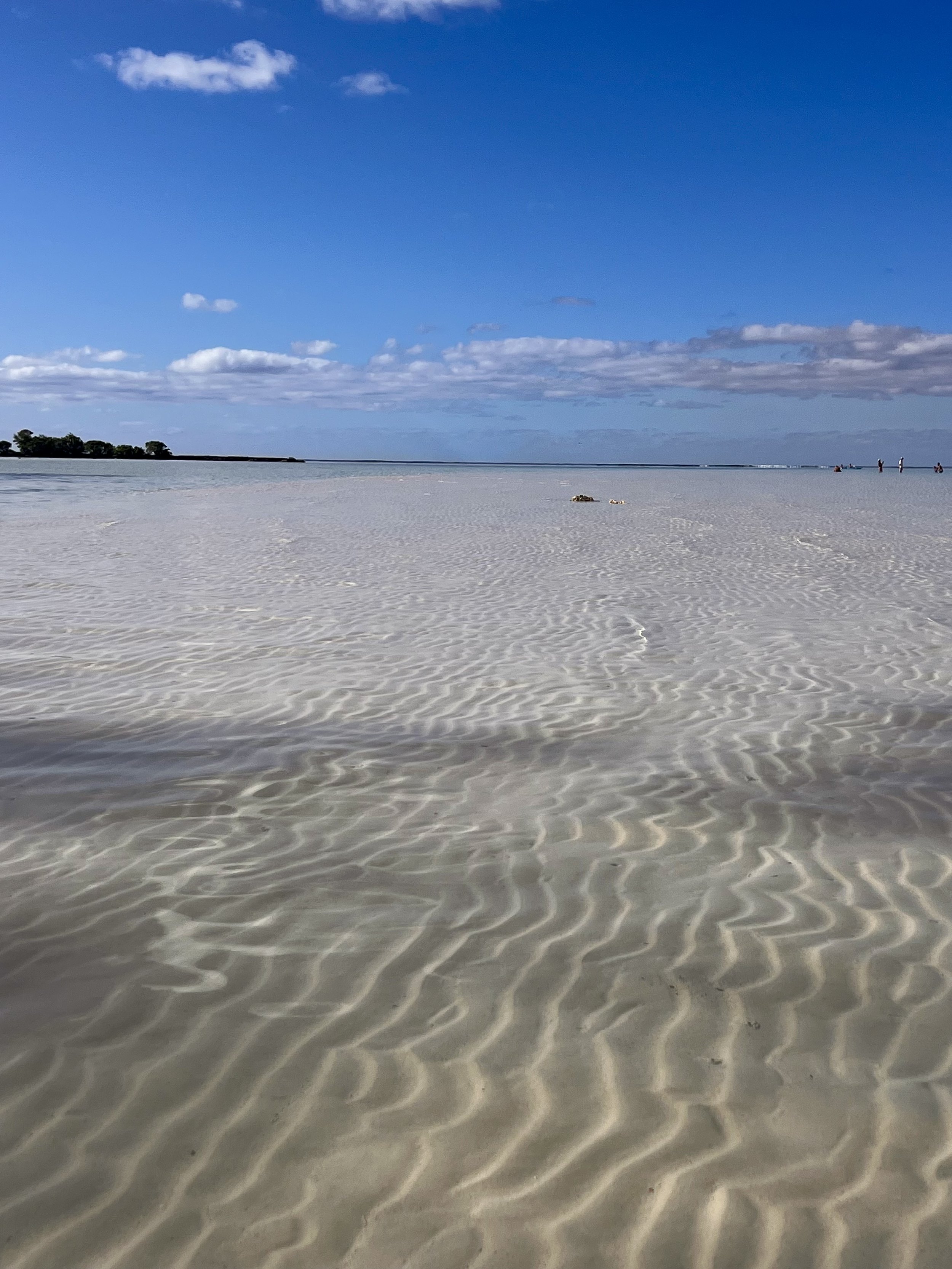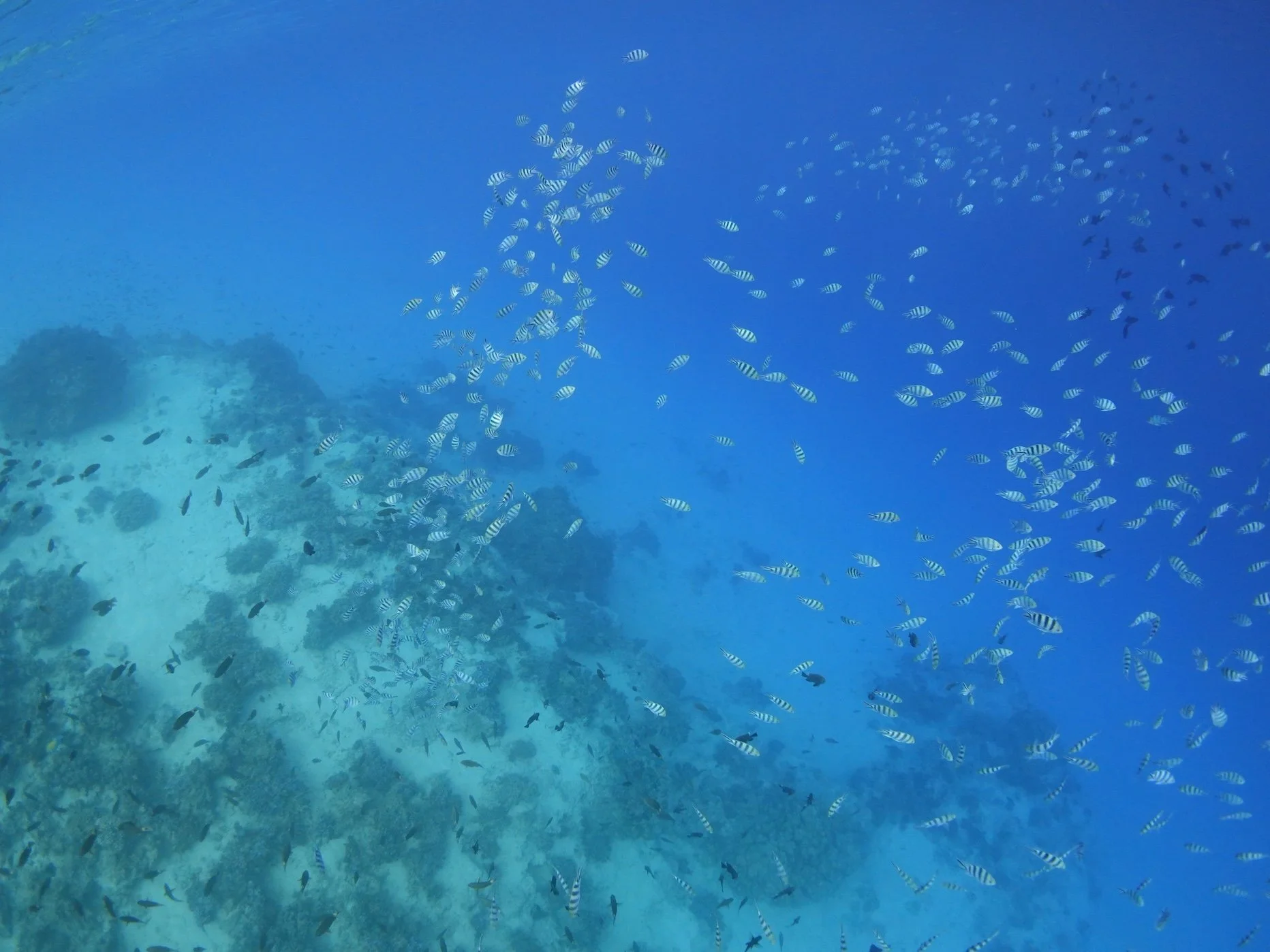Celebrating 100 Years in French Polynesia
Majestic Moorea with Tahiti in the distance
This month we collectively turned 100, celebrating our 50th birthdays the first week of August. We chose to observe this auspicious event in French Polynesia. This remote French territory in the South Pacific is reputed for its luxury overwater bungalows and paradise-perfect beaches, but we had a hunch there’s more to it than that.
French Polynesia comprises five archipelagos (Society, Tuamotu, Marquesas, Gambier and Australs). With 121 islands to choose from, we ultimately decided to follow our own travel philosophy and keep it simple, unpacking on two islands: Tahiti and Mo’orea.
Tahiti
Tahiti is the largest of the French Polynesian islands and home to the international airport and capital city Papeete. While many travelers use it simply as a launching point to the outer islands, Tahiti is stunning and well worth a visit. We spent six nights exploring its Jurassic interior, rich culture, and colorful marine life.
Tahiti itself is comprised of two islands: Tahiti Nui to the north and Tahiti Iti to the south. Tahiti Iti is smaller, wilder, and was home to the 2024 Olympic surf competition at Teahupo’o.
We just happened to be on Tahiti during the Olympics and had booked a private boat tour of Tahiti Iti with Coco Taxi, which took us right past the legendary Teahupo’o wave. We spent the day hiking lava tubes to waterfalls, rope swinging into mape-lined rivers, and swimming in dark caves tucked under earth’s cracks.
Teahupo’o
In Tahitian, Teahupo’o translates to "place of skulls"—a fitting name for this infamous surf that breaks 500 yards offshore in an abrupt deep-to-shallow coral pass.
Aside from all that, what else is there to do on Tahiti? We spent a day chasing waterfalls on a 4X4 expedition in the lush Papenoo Valley with Teuai Lenoir of La Orana Expeditions. Teuai means “bringer of the rains” and he stayed true to his name-the valley was brimming with cascades and he was brimming with passionate tales of his rich cultural heritage.
Tahiti Nui has stunning black sand beaches, incredible hiking trails, and fantastic snorkeling. We enjoyed paddle boarding with black tip sharks right off the stretch of white sand beach at PK 18 we called home during our stay.
Papeete is home to a fantastic market packed with stalls of fresh fruit, monoi oil, hand painted pareos, and of course, Tahitian black pearls. For history buffs, there is a small but mighty museum to pave your foundational knowledge of Polynesian migration and culture before visiting some of the remaining Marae, or temples, that dot the island.
mo’orea
Mo’orea, Tahiti’s “sister island,” is an easy 30-minute ferry ride from Tahiti. With its dramatic volcanic peaks, lush greenery, and crystal-clear lagoon, Mo’orea is a true South Pacific paradise. The island offers a variety of activities including snorkeling, diving, kayaking, hiking, and cultural exploration. It also beckons you to slow down and savor the moment in a hammock, over a sunrise coffee, or sipping a “sundowner” from a perfect beach.
We spent as much time under water as we did on land in Mo’orea thanks to its vibrant marine life. The colorful coral in Mo’orea’s lagoon is a living aquarium of tropical fish, curious sting rays, nonchalant sharks, and playful spinner dolphins.
Must-do activities on Mo’orea are of course sailing its electric-blue lagoon, swimming with sting rays, hiking its jagged peaks, kayaking with dolphins, and playing on jungle swings. We chose August not only to celebrate our birthdays, but also for the annual humpback whale migration that occurs from July-November and affords the opportunity to swim with these gentle giants from August 1.
Playful ray at Coco Beach
No trip to Mo’orea would be complete without spending a day at Coco Beach-a private motu that is home to Coco Beach restaurant where an advance reservation gets you a table for the day in white sand just steps from some of the best snorkeling on the island. We befriended two puppy-like sting rays named Spot and Stubby who played with us in the coral garden for several hours before returning to enjoy poisson cru—the national dish made of raw fish marinated in lime juice and coconut milk, washed down with a passionfruit mojito.
We brought our own snorkeling gear, which combined with our rental car, allowed us ultimate freedom to explore the island’s peaks, valleys, beaches, and coral gardens. Without a boat of our own, we booked a full-day catamaran sailing tour with Voila Mo’orea that took us snorkeling to sunken tikis, and rubbing shoulders with sharks and rays before watching a brilliant sunset over Oponohu Bay.
Having always dreamed of bring a mermaid, I satisfied this dream jet scooter snorkeling with Mo’orea Water Games in some of Mo’orea’s most pristine coral gardens at Temae Beach and Le Jardin de Corail. We soared with sea turtles, played hide-and-seek with puffer fish, trailed white tip sharks, and we even found Nemo!
As incredible as our days were, the star of the show was at the end of the day when Sky TV broadcasted fiery sunsets that saturated the horizon. Did you know French Polynesia has two sunsets? About 30 minutes after the sun says avoir, the sky slowly transforms into a palette of purple and pink cotton candy clouds streaked with Maitai. Some evenings we thought the sunset would never end!
Ready to pack your bags and head south of the equator? Read on for our travel takeaways!
Travel Takeaways
How do I get to French Polynesia? We flew United through San Francisco and the international flight was just under 8 hours, landing us in the same time zone as Hawaii. It’s easier to reach than Europe, and with half the jet lag! Several other US airlines offer direct flights from Los Angeles, Seattle, and San Francisco, as does Air Tahiti Nui and French Bee.
What’s it like in French Polynesia? Imagine France and Hawaii had a baby. Having just visited France in June, we were immediately struck by how familiar the food products and grocery stores were. The cuisine is a delectable fusion of French sauces, pastries, and baguettes, with local fresh fish, tropical fruits, and coconut-based dishes. We had some of the best French food of our lives on Mo’orea at Te Honu Iti restaurant. The pace, however, is decidedly tropical and flip flops are a way of life.
What’s the language of French Polynesia? While French is the official language, Tahitian is mostly spoken by islanders in their homes with French commonly used in schools and business. English is considered the third language and is widely spoken in restaurants, hotels, and other tourist destinations.
What is the weather like? The climate was surprisingly delightful. We chose to visit during their winter, with daytime highs in the mid-70’s. A light sweater in the evenings was appreciated, and the humidity was much lower than expected. While our accommodations provided mosquito nets and air conditioning, we found both unnecessary at this time of the year.
How do I get around? We rented a car and highly recommend it if you visit Tahiti or Mo’orea. Driving is on the right side of the road just like the US and is relatively easy given both islands only have one main road that rings the island. It was a breeze to take our car on the ferry to Mo’orea, with several ferry companies running regular affordable service between the two islands.
What’s the local currency? The local currency in French Polynesia is the Pacific Franc (CFP or XPF). As of today, the exchange rate is $1=108.07 XPF. The easier way to convert in your mind though is to just drop the last two zeros from the price in XPF. For example, 5,000 XPF is approximately $50. ATMs are widely available and most places take credit cards, even including American Express. You will need cash for some excursions, tips, and select eateries.
Is French Polynesia expensive? That depends on you. If you want to stay in an overwater bungalow at a luxury hotel, yes (although there are hotel point programs that help bring down the cost). We followed our own travel philosophy of staying local and opted for AirBnbs, which we loved because they connected us to the community. Both AirBnbs were on picture-perfect beaches just steps from the water and had full kitchens for us to prepare food. Our second AirBnb even provided a daily breakfast of fresh fruit, cheeses, meats, and breads. There are plenty of affordable, locally owned “Fare” or guest houses that provide breakfast, kayaks, and other recreational gear.
Meals and drinks in restaurants are roughly the same price as any metropolitan area in the US or Europe, with the exception of alcohol (champagne especially) which is substantially more pricey. The roulottes, or food trucks, are abundant and a fun and affordable way to try local food while keeping your spending in check. Be sure not to miss out on the local specialties!
Go local: Mo'orea's Manutea rum is made at the distillery
Poisson Cru at Snack Mahana: another must-do!
We were delighted by this South Pacific gem. The people are charming, driving was easy, food was excellent, and the scenery was remarkable. We dreamed of visiting French Polynesia for years but it always felt out of grasp—too far away, too expensive, too complicated. The reality proved us wrong. We hope it will prove you wrong too.
Would you be interested in joining a future Detour to French Polynesia? Let us know!







